Hyaluronic acid (HA) is a type of sugar that occurs naturally in the skin. If you're wondering what does hyaluronic acid do to your skin and how to use it, we've got you covered. In this blog, we will discover hyaluronic acid serum benefits and its ability to retain moisture, making it a popular ingredient in skincare products. Here's how you can incorporate HA into your skincare routine:
How to use hyaluronic acid serum
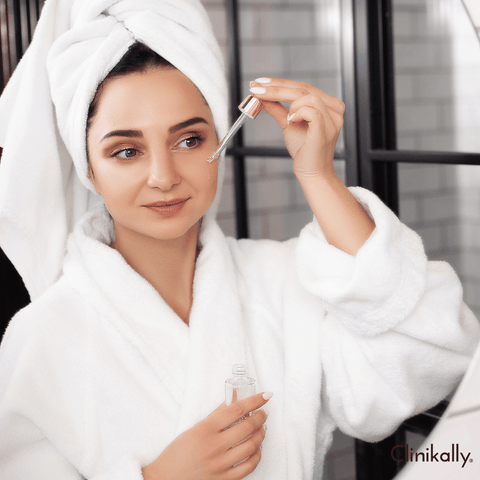
Using hyaluronic acid serum effectively involves a few simple steps to maximize its hydrating benefits for your skin:
-
Cleanse your face and pat dry
-
Apply a few drops of HA serum onto your fingertips
-
Gently massage the serum onto your face and neck
-
Follow up with a moisturizer
You can use an HA serum daily, both in the morning and at night. It can be applied before or after your usual toner and essence steps. With its reputation for drawing and holding onto moisture in the skin, hyaluronic acid serum is a useful addition to any skincare regimen, particularly for those seeking to increase their skin's general texture, plumpness, and hydration.
Proper application techniques for hyaluronic acid serum
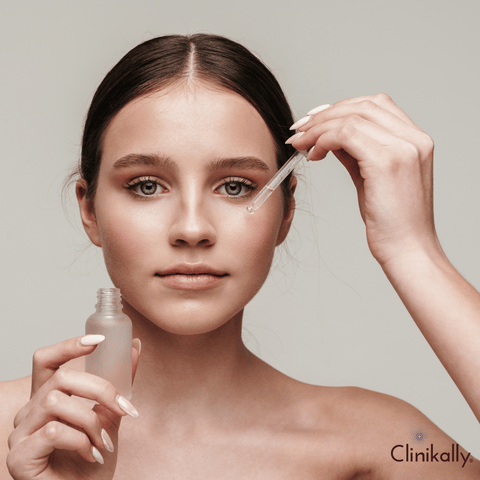
The benefits of hyaluronic acid serum can be maximised by using it correctly. Here are some examples of proper application techniques:
-
Begin with Clean Skin: Before applying any skincare products, wash your face with a gentle cleanser and pat it dry.
- Use a Toner (Optional): If you use a toner as part of your skincare routine, apply it before the hyaluronic acid serum. Toners can help balance the pH of the skin and prepare it for better product absorption.
- Apply a Small Amount: Because hyaluronic acid serums are potent, a small amount goes a long way. Apply a small amount (a few drops) to your fingertips. If it has a watery consistency, pat it gently onto your skin; if it has a slightly thicker consistency, spread it evenly.
- Massage or pat gently: Gently massage or pat the serum into your skin. Start with your brow and work your way down to cover your entire face and neck. Tugging or pulling on the skin is not recommended.
- Allow Absorption Time: Allow the serum to absorb into your skin for a few minutes before applying any other skincare products. This allows the hyaluronic acid to properly penetrate and work on the skin.
- Moisturiser: After the hyaluronic acid serum has been absorbed, apply your moisturiser to seal in the moisture. The serum attracts moisture to your skin, and the moisturiser locks it in, keeping it hydrated and plump.
- Apply Sunscreen During the Day: After applying hyaluronic acid serum in the morning, always apply a broad-spectrum sunscreen. Hyaluronic acid can make skin more susceptible to sun damage, but sunscreen can help protect against harmful UV rays.
- Use: Depending on your skin type and the serum's formulation, you can use it once or twice daily, preferably in the morning and/or evening.
-
Patch Test: Before applying the serum to your entire face, perform a patch test on a small area of skin to ensure no adverse reactions occur.
-
Remember that consistency is essential when it comes to skincare products. The use of hyaluronic acid serum on a regular basis can help maintain skin hydration, improve skin texture, and reduce the appearance of fine lines and wrinkles over time. If you have any specific skin concerns or skin conditions, you should seek personalised advice from a dermatologist.
Best time of day to apply hyaluronic acid
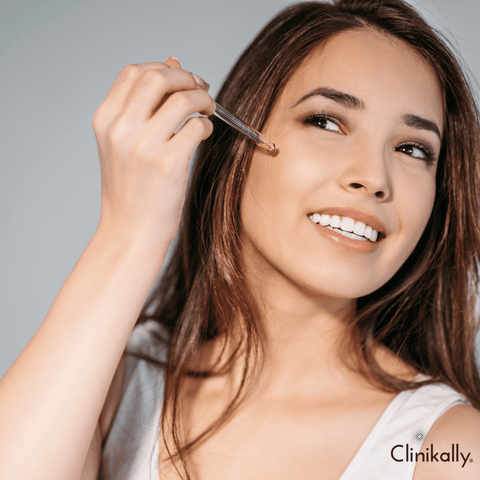
The best time of day to apply hyaluronic acid can vary based on your skincare routine and personal preferences. However, here are some considerations:
-
Morning: Applying hyaluronic acid serum in the morning can help hydrate your skin and create a smooth base for makeup application. It can also provide all-day hydration and plumping effects, giving your skin a refreshed appearance.
-
Evening: Using hyaluronic acid at night can also be beneficial as it allows the serum to work overnight, aiding in skin repair and rejuvenation. It can complement your nighttime skincare routine, allowing the serum to deeply hydrate your skin while you sleep.
Ultimately, the key is consistency. You can use hyaluronic acid both in the morning and evening if your skin tolerates it well. However, if you prefer to keep your morning skincare routine simpler or if you use other active ingredients during the day (like vitamin C or retinoids), applying hyaluronic acid at night might be more suitable for your regimen.
The most important aspect is to apply hyaluronic acid serum to clean skin, allowing it to absorb effectively, and then follow it up with a moisturizer to lock in the hydration regardless of the time of day you choose to use it.
Hyaluronic acid for the face: benefits
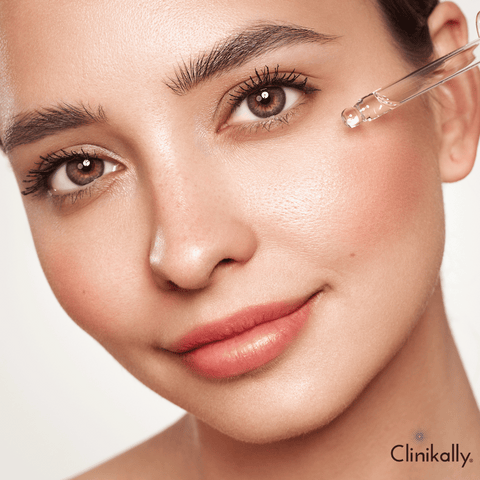
A common element in skincare products, hyaluronic acid is prized for its many facial health advantages and outstanding moisturising abilities. There are several benefits to using HA on your face:
-
Hydrates the skin: HA has a high water-binding capacity, which helps to keep the skin hydrated and plump.
-
Reduces the appearance of fine lines and wrinkles: By holding onto moisture, HA can help to plump up the skin and smooth out the appearance of fine lines and wrinkles.
-
Improves skin texture: HA can help to improve the overall texture of the skin by making it feel softer and smoother.
Keep in mind that while hyaluronic acid has several advantages, every person will experience different outcomes. When it comes to better skin hydration and texture, consistent use over time frequently produces the best results. Compatibility must be ensured, as with any skincare product, by using high-quality formulations and closely monitoring your skin's reaction.
Can everyone use hyaluronic acid?

Hyaluronic acid is considered safe for most skin types due to its gentle and non-irritating nature. Individual reactions may vary, as with any skincare ingredient. HA is suitable for all skin types, including sensitive skin. It is a gentle and non-irritating ingredient that can be used safely by the majority of people. However, if you have any concerns or allergies, it is always best to patch-test a new product before using it all over your face.
How often can you use hyaluronic acid?
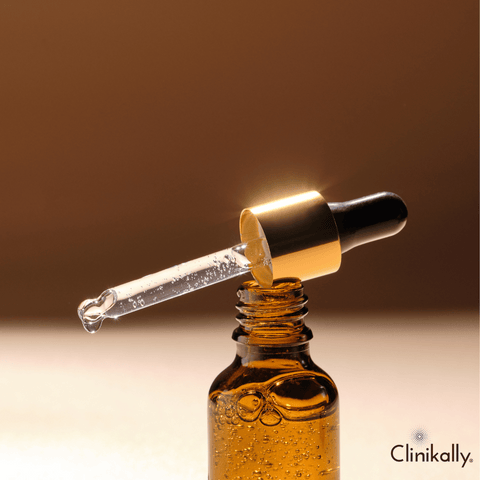
There is no harm in using an HA serum daily. Incorporating it into your daily skincare routine can help to keep your skin hydrated and improve its overall appearance. If you are using a product that contains HA in addition to other active ingredients, be sure to follow the recommended usage instructions.
Is hyaluronic acid better than retinol?
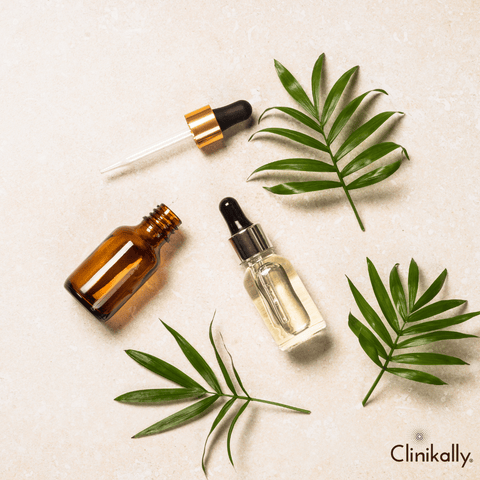
Both HA and retinol can be beneficial for the skin. HA is known for its ability to hydrate and improve skin texture, while retinol can help to improve the appearance of fine lines, wrinkles, and uneven skin tone. It is best to consult with a skincare professional to determine which ingredient may be best for your individual needs. At Clinikally, you can book an online consultation with a dermatologist at your chosen time and convenience, hassle-free.
Hyaluronic acid for hydration and plumping

Hyaluronic acid is a highly effective humectant known for its ability to attract and retain moisture. It serves two primary functions in skincare:
-
Hydration: The remarkable ability of hyaluronic acid to retain water molecules is remarkable. When applied topically, it helps to keep the skin hydrated by absorbing moisture from the surrounding air. It is a wonderful moisturising component for all skin types, including sensitive, oily, and dry skin because it can hold up to 1000 times its weight in water.
-
Plumping: Hyaluronic acid can temporarily fill up the face and reduce the appearance of wrinkles, fine lines, and dehydration lines by profoundly moisturising the skin. The skin seems smoother, firmer, and younger thanks to this plumping effect.
When incorporating hyaluronic acid into your skincare routine, remember to:
-
Consistency is essential: The best results will come from regular and consistent use. Incorporate it into your daily routine or as directed by the product's instructions.
-
Layering with other products: Hyaluronic acid can be used in conjunction with other skincare ingredients such as moisturisers, serums, or creams to boost its hydrating effects. Apply it to damp skin and follow with a moisturiser to lock in the moisture.
-
Consider the following: Low humidity, for example, can reduce the efficacy of hyaluronic acid. In drier climates, using an indoor humidifier can help keep skin hydrated.
Before using any new skincare product, always run a patch test to make sure it is suitable for your skin type and won't cause any negative reactions. In general, hyaluronic acid is well accepted, but it's crucial to keep an eye on how your skin reacts, particularly if you have sensitive skin or certain skin problems.
Other hyaluronic acid products to try
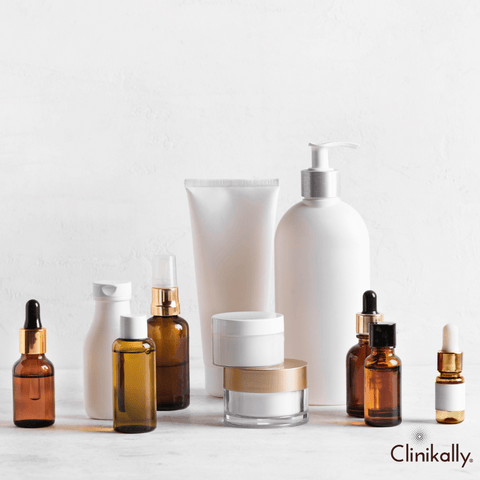
There are numerous hyaluronic acid-based skincare products on the market, each catering to a different set of preferences and skin needs. In addition to serums, HA can be found in the following skincare products:
-
Hyaluronic acid face wash: Look for a face wash that contains HA to help hydrate the skin as you cleanse.
-
Hyaluronic acid moisturizer: Moisturizers with HA can help to lock in moisture and improve the overall appearance of the skin.
-
Hyaluronic acid supplements: There are oral supplements available that contain HA. It is important to consult with a healthcare professional before adding any supplements to your routine. They can recommend the best options based on your individual needs and health history.
Take into account your skin type, preferences, and any particular skin issues you wish to address when choosing hyaluronic acid products. To ensure compatibility, it's critical to read product labels, verify ingredients, and take your skin's sensitivity into account. Furthermore, avoiding negative reactions can be achieved by patch-testing new products before utilising them.
Hyaluronic acid infused cleansers and toners
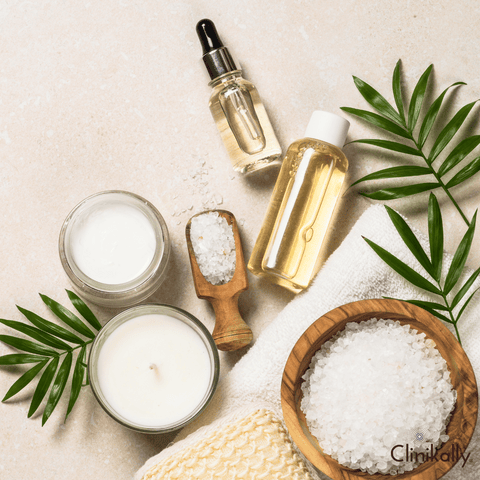
The popularity of hyaluronic acid-infused cleansers and toners can be attributed to the extra moisturising effect they offer throughout the cleansing and toning phases of a skincare regimen. A summary of their roles is as follows:
- Hyaluronic Acid in Cleansers:
-
Hydrating Cleansing: Hyaluronic acid-infused cleansers aim to cleanse the skin while also providing hydration. They aid in the removal of dirt, excess oil, and impurities without removing the skin's natural moisture.
-
Gentle Hydration: Hyaluronic acid in cleansers can provide a mild hydrating effect during the cleansing process, leaving the skin feeling softer and more moisturised than some traditional cleansers.
- Hyaluronic Acid in Toners:
-
Hydration and Preparation: Hyaluronic acid toners hydrate and prepare the skin for the next steps in skincare. They help to balance the pH levels of the skin while also adding hydration.
-
Enhanced Absorption: Hyaluronic acid in toners can help serums, moisturisers, and other skincare products that follow penetrate deeper into the skin for greater effectiveness.
When it comes to cleansers and toners containing hyaluronic acid:
-
Skin Type Consideration: Many skin types can benefit from these products, but dry or dehydrated skin in particular. However, because hyaluronic acid is usually mild and moisturising, it may be appropriate for many skin types.
-
Additional Ingredients: To further improve your skincare regimen, look for cleansers and toners that include additional therapeutic compounds, like antioxidants or calming agents, that work in concert with hyaluronic acid.
-
Routine Consistency: Regularly using cleansers and toners enriched with hyaluronic acid in your skincare regimen can help keep your skin hydrated and support a healthy skin barrier.
Hyaluronic acid is generally well tolerated, but, as always, it's crucial to do a patch test before using new products, particularly if you have sensitive skin or allergies. In the end, using these products in your routine can offer an additional layer of hydration, leaving your skin feeling renewed and nourished.
Hyaluronic acid in moisturizers and masks

Because of its exceptional hydrating properties, hyaluronic acid is commonly found in moisturisers and face masks. This is how it works in these skincare products:
-
Hyaluronic acid-containing moisturisers work by drawing moisture to the skin, which keeps it plump and hydrated. They can restore the moisture barrier of the skin, stopping water loss and preserving moisture levels.
-
A variety of moisturisers, including creams, gels, lotions, and serums, contain hyaluronic acid. The concentration and formulation may differ, but all aim to hydrate and improve skin texture.
-
Hyaluronic acid moisturisers are often suitable for different skin types, including dry, normal, combination, and oily skin, because they provide hydration without being too heavy or greasy.
-
Hyaluronic acid-infused face masks provide an intense burst of hydration for the skin. They are intended to deeply moisturise the skin, leaving it feeling refreshed, plumped, and supple.
-
Hyaluronic acid masks can be especially beneficial for dealing with dehydrated or dull skin. They are frequently used as a treatment to provide immediate hydration and radiance.
Considerations:
-
Hyaluronic acid in moisturisers or masks can be combined with other skincare products to enhance their hydrating effects. Using a mask after cleansing or layering a hyaluronic acid serum underneath a moisturiser can enhance hydration.
-
Hyaluronic acid moisturisers can be used daily as part of your skincare routine, depending on the product and your skin's needs. Face masks containing hyaluronic acid can be used a few times per week or as needed for extra hydration.
-
As with any new skincare product, a patch test should be performed to ensure compatibility with your skin, especially if you have sensitive skin or allergies.
Including hyaluronic acid-infused moisturizers or masks in your skincare routine can help maintain skin hydration, improve skin texture, and provide a more radiant complexion. These products can be useful additions to your regimen because they provide targeted hydration and nourishment to your skin.
Get smoother skin with Hyaluronic acid serum

Hyaluronic acid is a versatile skincare ingredient that can benefit all skin types. Whether you use an HA serum, face wash, moisturizer, or supplement, adding HA to your skincare routine can help to keep your skin hydrated and improve its overall appearance. As with any new product, it is important to patch test and consult with a healthcare professional if you have any concerns or allergies. They can help recommend the best products and usage instructions for your individual needs and skin type. Overall, incorporating hyaluronic acid into your skincare routine can help to keep your skin hydrated, improve its texture, and reduce the appearance of fine lines and wrinkles. So, it is a beneficial addition to any skincare routine.
Tailoring hyaluronic acid use for different skin types

When used correctly, hyaluronic acid is a versatile skincare ingredient that can benefit a wide range of skin types. Here's how to adjust its application for different skin types:
- Dry Skin:
-
Use Richer Formulations: To provide intense hydration and prevent moisture loss, use hyaluronic acid in creams or heavier moisturisers.
-
Layering Method: Apply a hyaluronic acid serum or toner to damp skin, then a heavier moisturiser to lock in the moisture.
-
Consider Humidifiers: In dry environments, using a humidifier can supplement hyaluronic acid by adding moisture to the air, assisting with skin hydration.
- Oily or Acne-Prone Skin:
-
Lighter Formulations: To avoid a heavy or greasy feeling, look for oil-free or lightweight serums and gel-based moisturisers with hyaluronic acid.
-
Non-Comedogenic Products: Make certain that the products you use will not clog pores or worsen acne. Choose products that are labelled "non-comedogenic" or "oil-free."
-
Hydration without Overloading: Use hyaluronic acid in moderation to hydrate without overwhelming the skin, especially if your skin tends to produce excess oil.
- Combination Skin:
-
Targeted Application: Apply hyaluronic acid to areas that require more hydration, such as drier patches, while using lighter formulations on oilier areas.
-
Balanced Formulations: Look for formulations that provide hydration without making oily areas greasier or drying out drier patches.
- Sensitive Skin:
-
Choose Gentle Products: To avoid potential irritants, look for hyaluronic acid products with few ingredients or those specifically formulated for sensitive skin.
-
Patch Test: Always perform a patch test to ensure that the product is not causing any adverse reactions or sensitivities.
General Tips for All Skin Types:
-
Consistency: Incorporate hyaluronic acid into your skincare routine regularly, adjusting the frequency based on your skin's response.
-
Combining with Other Products: To maximise its benefits while minimising potential irritation, combine hyaluronic acid with gentle, soothing ingredients such as aloe vera or ceramides.
-
Sun Protection: When using hyaluronic acid, always use sunscreen during the day, as it can potentially make skin more susceptible to sun damage.
Adapting your hyaluronic acid use to your skin type entails selecting appropriate formulations and incorporating them thoughtfully into your skincare routine. It is critical to pay attention to your skin's responses and adjust accordingly for the best results. If you are unsure, a dermatologist can provide personalised advice based on your unique skin needs.
Layering hyaluronic acid with other skincare products
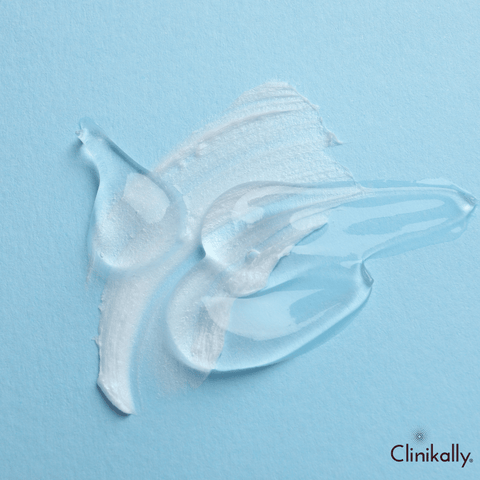
Hyaluronic acid can be used in conjunction with other skincare products to maximise its moisturising properties and complete your skincare regimen. Here's how to layer hyaluronic acid with various items in an efficient manner:
-
Cleanser: Before using any skincare products, gently wash your face to get rid of any makeup, oil, and debris. Since hyaluronic acid is a moisturising component that is supposed to stay on the face, it is not commonly found in cleansers.
-
Toner: If using a toner is part of your routine, use it. Toners containing hyaluronic acid can add another layer of moisture to the skin and prepare it for better product absorption.
-
Hyaluronic Acid Serum: Wet skin and apply hyaluronic acid serum. Because hyaluronic acid attracts moisture into the skin, it works best when applied to damp or moist skin. Apply a few drops to your face and neck, rubbing them in gently.
-
Other Serums (Optional): If you use other serums, such as vitamin C or retinol, apply them after the hyaluronic acid serum. Allow each serum to absorb completely before applying the next.
-
Moisturizer: To preserve the moisture that the hyaluronic acid serum has supplied, use a moisturiser thereafter. The moisturiser stops the skin from losing water and aids in retaining moisture.
-
Sunscreen (Daytime): Apply the last layer of sunscreen in the morning regimen. Since hyaluronic acid cannot protect skin from the sun's harmful UV rays, sunscreen application is essential.
Some Advice on Layering Effectively:
-
Apply Thinnest to Thickest: To guarantee optimal absorption, layer skincare products in descending order of consistency. Hyaluronic acid serum is typically light and should be used before applying heavier creams or oils.
-
Wait for Absorption: Allow each product to absorb into the skin for a few moments before applying the next. This ensures that each product can penetrate and function properly.
-
Adjust for Sensitivity: If layering products causes irritation or sensitivity, consider using fewer products or alternating them on different days to avoid overloading your skin.
-
Consistency is essential: To reap the full benefits of hyaluronic acid, incorporate it into your daily routine on a regular basis. Regular use can help to improve skin hydration and texture over time.
It is critical to pay attention to how your skin reacts while layering products. Depending on your skin's needs and sensitivities, you may need to change the order or frequency of application.









































